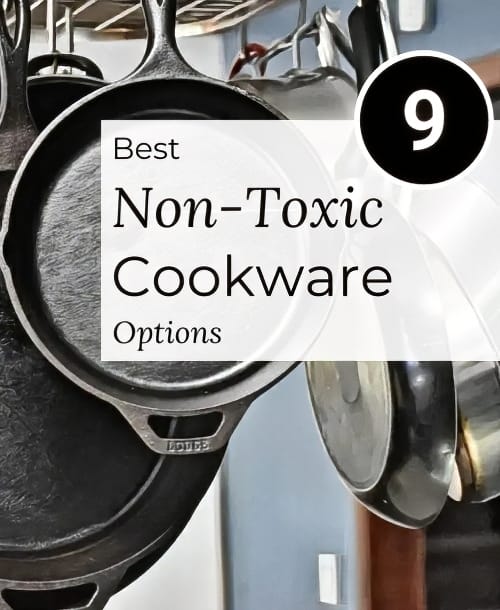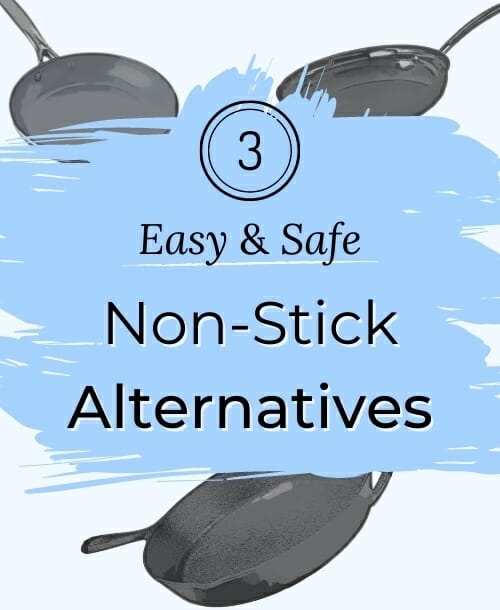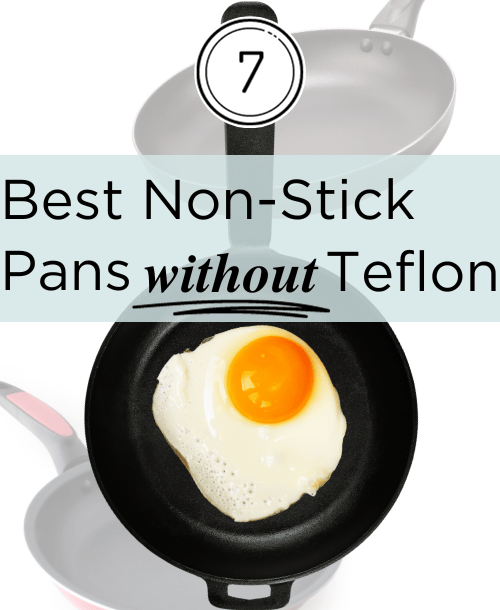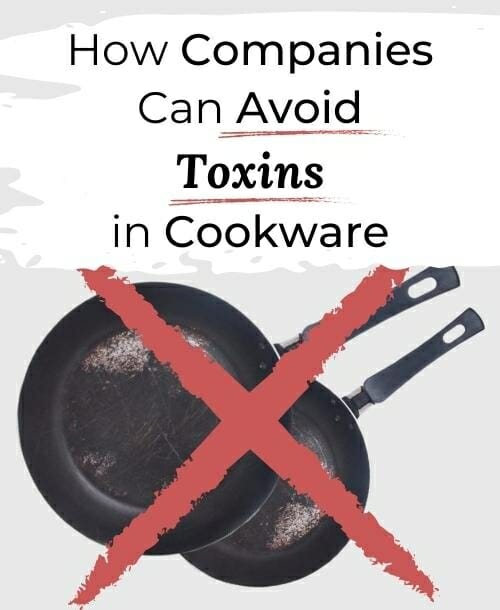
As consumers, we’re increasingly aware of the health risks surrounding us every day…
We don’t want to buy products containing chemicals that put our families and us at risk.
In fact, according to a 2017 survey, 84% of customers are more likely to shop at companies that have taken steps to cut dangerous chemicals from their products.
While we as customers can take certain actions to avoid chemicals in our products, what steps should companies take to eliminate these chemicals in the first place?
This guide explains how companies can avoid harmful chemicals in nonstick cookware products. You’ll also find actionable tips on avoiding toxic cookware as you shop online. So when you’re buying your next baking sheet or pan, look out for brands who’ve taken these steps—
What’s the Problem? Chemicals in Cookware
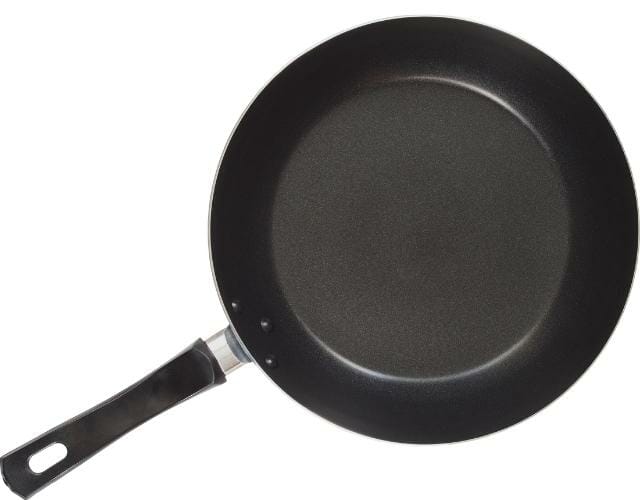
Harmful chemicals and heavy metals can be found in many cookware items sold today.
Nonstick cookware is one of the biggest culprits, as it may contain PFAS in its coatings.
PFAS (per and poly-fluoroalkyl substances) are a class of toxic non-stick pan chemicals used in many products, not just cookware.
One PFAS chemical, perfluorooctanoic acid (PFOA), is now banned in many countries due to cookware health concerns.
Instead, the most common use of PFAS today is PTFE, a PFAS chemical that goes by the brand name Teflon. A 2020 study showed that 79% of nonstick pans have PTFE coatings.
According to the CDC, PFAS can cause increased cholesterol, liver problems, and cancer – to name only a few.
Copper cookware is another, as it can leach toxic copper molecules into food. Copper is considered a reactive metal, as acidic foods can break it down and cause leaching.
Uncoated copper cookware (or that with a degraded protective layer) is dangerous because copper in your food may cause health problems in high quantities.
How Can Cookware Companies Avoid Chemicals?
Here are three easy ways companies can steer clear of toxic materials and coatings:
Use Non-Toxic Materials
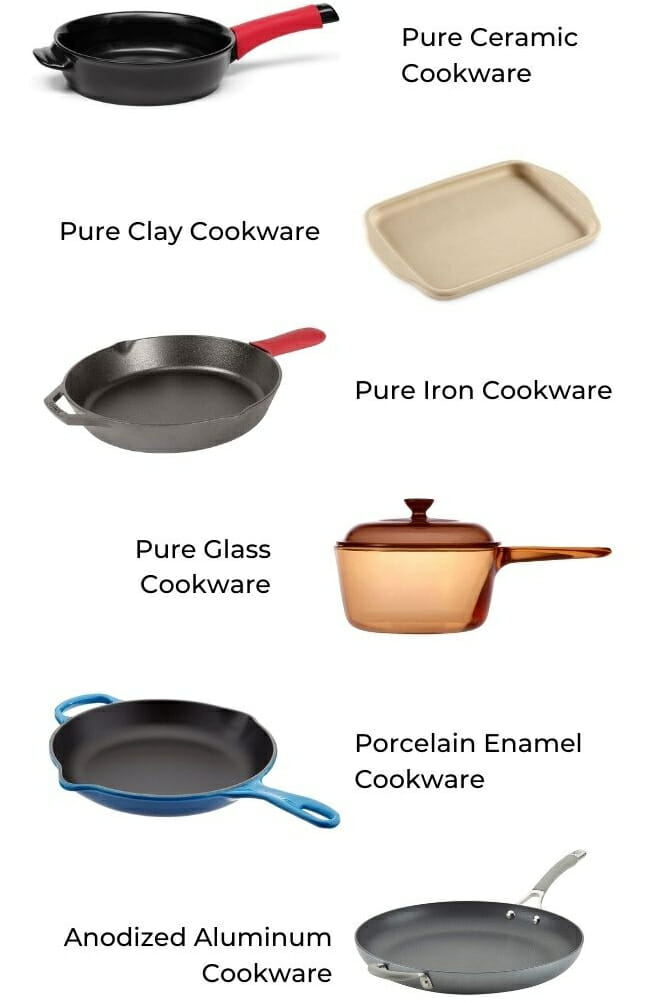
1. Pure Ceramic Cookware
Pure, 100% ceramic cookware is made from a mixture of sand, minerals, and clay – without harmful metals or chemicals.
Ceramic is an excellent option as it safely withstands high temperatures and works well in the oven.
2. Pure Clay Cookware
Clay is also a great naturally non-toxic material. But, manufacturers should use a non-toxic glaze in addition to the clay…
Without it, small amounts of arsenic can leach out of unglazed clay into food.
3. Pure Iron Cookware
Pure iron, also known as wrought iron, is not only chemical-free, but can also add a healthy amount of iron to your food.
It’s quite durable, but heats up very quickly and doesn’t do as well as cast iron in high heat.
Cast iron, an iron alloy with a small amount of carbon, is another non-toxic cookware material. It excels in high heat, plus it’s naturally nonstick.
The downside is that cast iron cannot go in the dishwasher. Also, it requires a seasoning layer, so it’s a bit higher maintenance than other options.
4. Pure Glass Cookware
Glass does not contain any harmful chemicals, metals, or additives.
It’s also non-reactive, so you’re able to cook anything without fear of it leaching material into your food.
But, as you might’ve guessed, the biggest problem with glass cookware is that it breaks easily. It’s sensitive to temperature changes, too.
5. Porcelain Enamel Cookware
Porcelain enamel cookware is often steel, iron, or aluminum cooking pans with a porcelain (type of glass) coating on top.
For porcelain enamel to be truly non-toxic, the coating must be durable and safe. If the enamel layer breaks or degrades, the underlying material can expose you to chemicals.
6. Aluminum Cookware
Aluminum pots and pans are a bit more controversial, as there may be a link between very high levels of aluminum exposure and Alzheimer’s.
Yet, tests of aluminum cookware show the amount of aluminum that leaches out while you cook is tiny and unlikely to impact health.
Learn more about the best safe cookware materials in our in-depth guide.
Use Durable, PFAS-Free Coatings
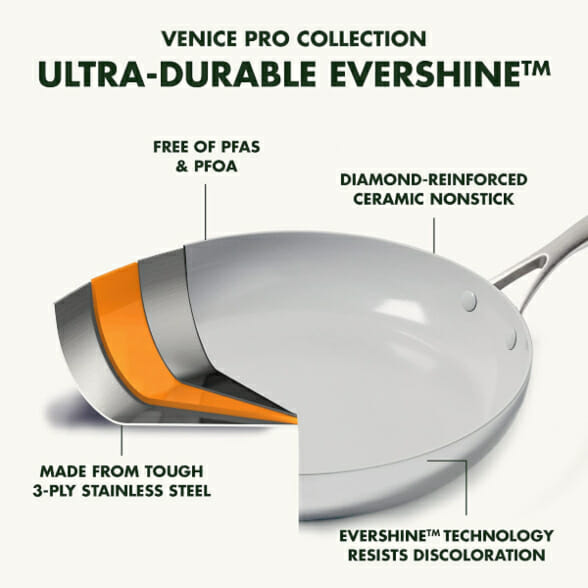
First of all, companies should avoid nonstick coatings that use any PFAS in cookware, not just PFOA.
While PFOA is banned in many countries, there are thousands of PFAS chemicals in cookware whose toxicity is generally unknown, including PTFE (Teflon).
Truly safe cookware should avoid all PFAS, not just those officially banned.
Additionally, companies using coatings on their products should ensure the layers are durable. If the coating degrades, the base layer can expose customers to harmful substances underneath.
As discussed above, copper pots and pans may have a protective, PFAS-free coating. When this coating degrades, especially after high heat use, the copper underneath can leach into food.
Undergo Thorough Testing
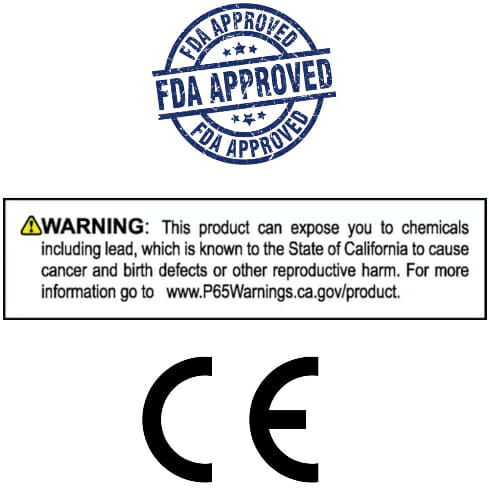
All cookware companies should undergo third-party testing for their products.
Not only does testing help ensure cookware products are safe, but it makes the product more popular with customers. In fact, 93% of consumers surveyed in a 2017 poll responded that they’re more likely to buy a product with a third-party seal.
Many third-party testing companies will test for the presence of heavy metals such as lead and cadmium. Also, chemicals such as phthalates.
Testing is essential for compliance with global regulations focused on protecting consumers from toxic substances.
It’s the only way to ensure compliance with the following requirements:
- U.S. FDA regulation: The United State’s Food and Drug Administration standards govern the production of cookware and coatings. Cookware may show an “FDA Approved” seal. While the FDA does not “approve” cookware, this label indicates the item does not contain anything banned by the FDA.
- California Proposition 65 regulation: California’s Proposition 65 demands a warning label for several chemicals and heavy metals in cookware. Most often, you’ll see this label on lead-containing products. Cookware using chemicals regulated by Prop 65 may cause cancer or reproductive harm in large amounts.
- EU REACH regulation: The European Union’s REACH regulation governs chemical usage in cookware and other consumer goods. Cookware that complies with all EU regulations, including REACH, will show a “CE symbol.”
How Customers Can Avoid Toxins in Cookware
So, where does all this leave us, the customer?
Here are a few ways to determine if a cookware company follows the guidelines discussed above:
Read the Ingredients
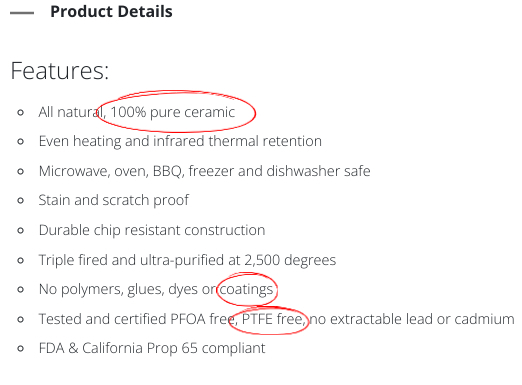
If possible, look for cookware made from a pure safe material, not just one that uses a safe material.
For example, many pots are ceramic-coated, but that coating will degrade over time. Once the layer wears down, the underlying base may expose you to heavy metals.
To avoid that, look for pans that are 100% ceramic (although they’re often costly).
Refer to the above screenshot. You’ll see how the brand (Xtrema) mentions “100% pure ceramic” and also, “No polymers, glues, dyes or coatings.”
Check for Third-Party Testing
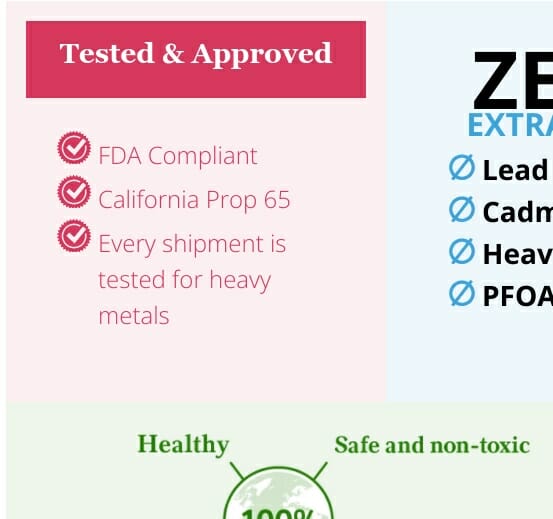
When browsing cookware, check the labels and brand’s website for seals showing a third party tested the product.
As discussed above, tested products following all necessary safety regulations will include this information… You’ll often find it on the product itself or its packaging.
Beware of Misleading Labels
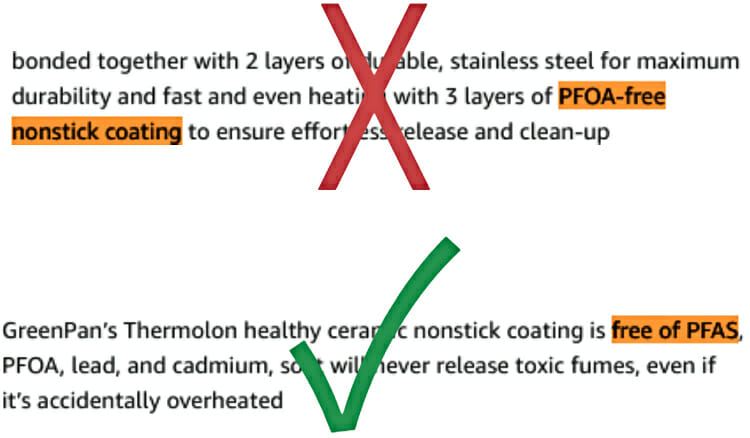
Many nontoxic cookware items bear labels touting the product’s safety. But not all cookware with “safe” labeling is actually non-toxic…
Generally, it’s a good idea to be skeptical of “green” cookware labels.
Several cookware lines try to sell health-conscious consumers with labels that make their products seem healthy or eco-conscious.
But in reality, these items often contain unhealthy cookware chemicals not mentioned on the label… Or have a technically nontoxic coating that wears off quickly, exposing you to hazardous substances.
For example, “PFOA-free” labels do not mean the cookware is PFAS-free. While the EPA legally phased out PFOA in the US, companies use other PFAS chemicals to substitute it—
Many companies use a new chemical called “Gen X” to replace PFOA in nonstick coatings. While its health effects aren’t entirely clear, Pubmed states Gen X is “suspected to have similar toxicity” to PFOA.
So, rather than buying cookware labeled “PFOA-free,” look for labels that advertise “PFAS-free.” These pots and pans are free of all chemicals classed as PFAS and can help you avoid sneaky labels.
The good news? These misleading labels may be phased out soon:
A recent California law, the California Safer Food Packaging & Cookware Act of 2021, bans companies from falsely claiming that their products are PFAS-free.
California’s new law also requires manufacturers to label their products for any toxic chemicals in non-stick cookware… Plus, list those chemicals on the company website.
What’s Next?
Given all this information, buying new cookware can feel quite overwhelming. How can you pick truly non-toxic cookware that also meets your functional needs?
Don’t worry – there’s no need to go out and test all the nontoxic products yourself! Check out our guide for the best non-toxic cookware in 2022.
Lena Milton
Lena Milton is a freelance writer covering sustainability and environmental science. She graduated from Brown University, and today writes to help consumers understand the environmental and ethical challenges in everyday life so we can find viable solutions for both.
Enjoyed this post? Share it with your friends!
Related Posts

